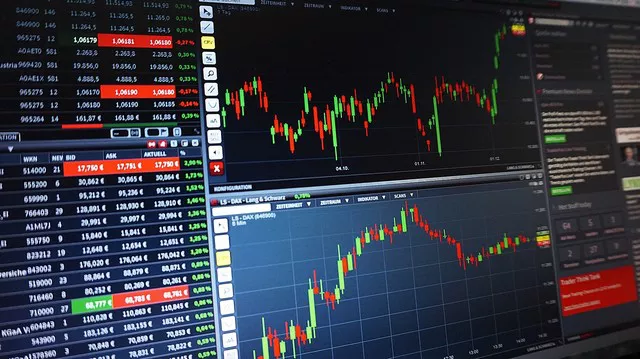Futures contracts are financial instruments that obligate the buyer to purchase an underlying asset or the seller to sell an asset at a predetermined price and date in the future. These contracts serve as vital tools for price discovery and risk management in various markets, ranging from commodities like oil and gold to financial instruments like stock indexes and currencies.
Key Characteristics of Futures:
Leverage: One of the most notable features of futures trading is leverage, which allows traders to control a large position with a relatively small amount of capital. While leverage can amplify potential profits, it also magnifies losses, making risk management essential.
Margin Requirements: Futures trading requires initial deposits known as margin requirements, which ensure that traders have sufficient funds to cover potential losses. Margin requirements vary based on factors such as the volatility of the underlying asset and regulatory requirements.
Mark-to-Market Settlement: Futures contracts are settled daily based on the market price of the underlying asset. This mark-to-market process involves adjusting account balances to reflect gains or losses due to price movements, reducing the risk of default.
Expiration Dates: Futures contracts have expiration dates, after which they cease to exist. Traders must decide whether to roll over to a new contract or exit their positions before the expiration date, which can affect trading strategies and risk exposure.
Key Sources of Risk in Futures Trading
Market Risk: Fluctuations in the price of the underlying asset pose a significant risk to futures traders, especially when combined with leverage. Rapid price movements can lead to substantial losses or unexpected gains.
Liquidity Risk: Limited trading volume or sudden changes in market conditions can make it challenging to enter or exit positions at desired prices. Illiquid markets increase the risk of slippage, where trades are executed at unfavorable prices.
Counterparty Risk: Futures contracts are traded on exchanges, which act as intermediaries between buyers and sellers. However, there is still a risk that the counterparty to a futures contract might default on their obligations, leading to financial losses for the other party.
Margin Call Risk: If the value of a futures position declines significantly, the trader may receive a margin call from their broker, requiring them to deposit additional funds to cover potential losses. Failure to meet margin requirements can result in the forced liquidation of positions.
Operational Risk: Errors in trading orders, data entry mistakes, or system failures can lead to unintended consequences and losses. Traders must implement robust systems and procedures to mitigate operational risks.
Factors Influencing Futures Risk
Leverage: Higher leverage amplifies both potential profits and losses, making it a double-edged sword for futures traders. While leverage can enhance returns, it also increases the risk of significant losses, especially in volatile markets.
Volatility: Price volatility is a key determinant of futures risk, with higher volatility increasing the likelihood of rapid price movements and larger fluctuations in account balances. Traders must assess the volatility of the underlying asset and adjust their risk management strategies accordingly.
Trading Strategy: The chosen trading strategy has a significant impact on risk exposure. Aggressive strategies, such as day trading or scalping, tend to carry higher risk compared to more conservative approaches like trend following or position trading.
Experience and Expertise: Traders with greater experience and knowledge of market dynamics are better equipped to manage risk effectively. Continuous learning and skill development are essential for navigating the complexities of the futures market.
Mitigating Futures Risk
Proper Risk Management: Developing and adhering to a sound risk management plan is crucial for managing potential losses. This plan should include defining risk tolerance, establishing stop-loss orders, diversifying positions, and closely monitoring market conditions.
See Also: What is Futures Trading with an Example?
Understanding Leverage: Using leverage strategically and avoiding excessive leverage can help manage risk. Traders should assess their risk tolerance and capital adequacy before utilizing leverage in futures trading.
Position Sizing: Selecting the appropriate position size based on risk tolerance and available capital is essential for managing risk. Position sizing techniques such as the Kelly Criterion or fixed fractional sizing can help traders optimize risk-adjusted returns.
Continuous Monitoring: Keeping abreast of market conditions, news events, and economic data is essential for making informed trading decisions. Traders should continuously monitor their positions and adjust them as needed to adapt to changing market dynamics.
Futures Risk vs Other Asset Classes
Futures trading inherently carries more risk than investments in traditional asset classes like stocks or bonds. The potential for rapid and significant price movements makes futures trading more suitable for experienced traders with a higher risk tolerance.
However, futures can also provide opportunities for diversification and risk management in a well-diversified portfolio. By incorporating futures contracts into their investment strategy, investors can gain exposure to asset classes not easily accessible through traditional means, such as commodities or foreign currencies.
Are Futures High Risk?
Futures trading does carry a high level of risk, but it is not inherently risky. The level of risk is largely dependent on the trader’s strategy, risk management practices, and market conditions.
For those with a strong understanding of market dynamics, proper risk management, and a high risk tolerance, futures trading can offer opportunities for significant returns. However, for inexperienced traders or those with a low risk tolerance, futures trading might not be the most suitable investment strategy.
Conclusion
The answer to the question “Are futures high risk?” is not a simple yes or no. Futures trading can be both highly rewarding and potentially risky, with the level of risk heavily influenced by the trader’s actions and market dynamics.
By understanding the sources of risk, implementing proper risk management practices, and carefully considering their risk tolerance, traders can navigate the futures market with greater confidence and a clearer understanding of the potential rewards and challenges involved.
Remember, while futures trading offers potential for profit, it’s important to approach it with a realistic view of the inherent risks and to prioritize proper risk management practices above all else.


